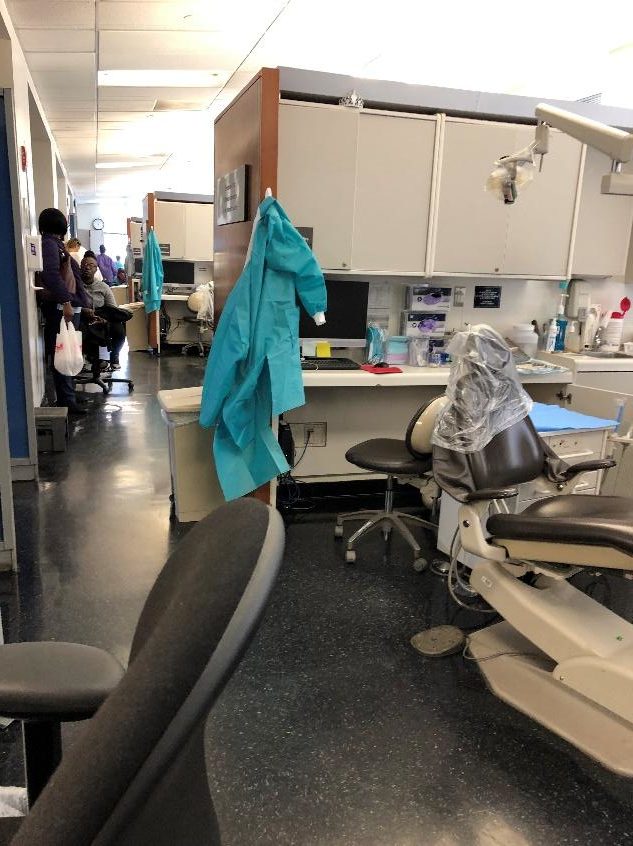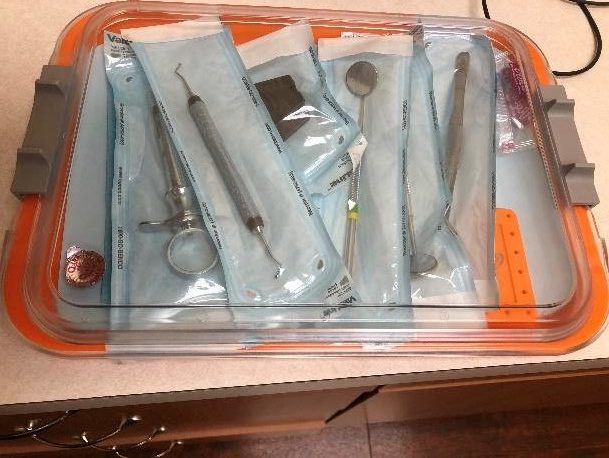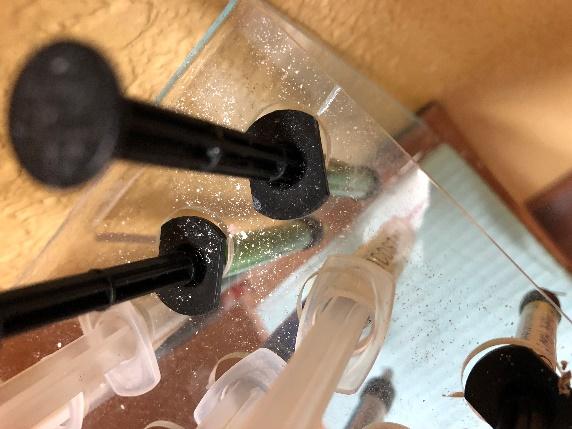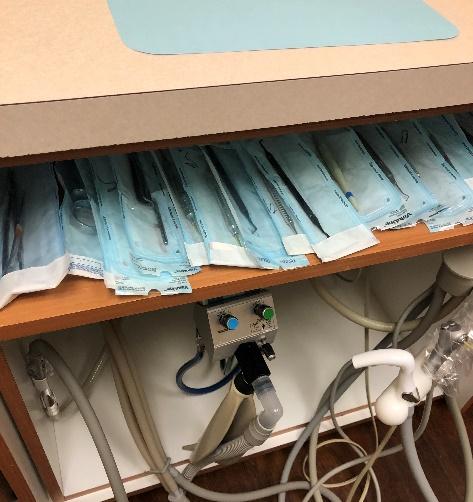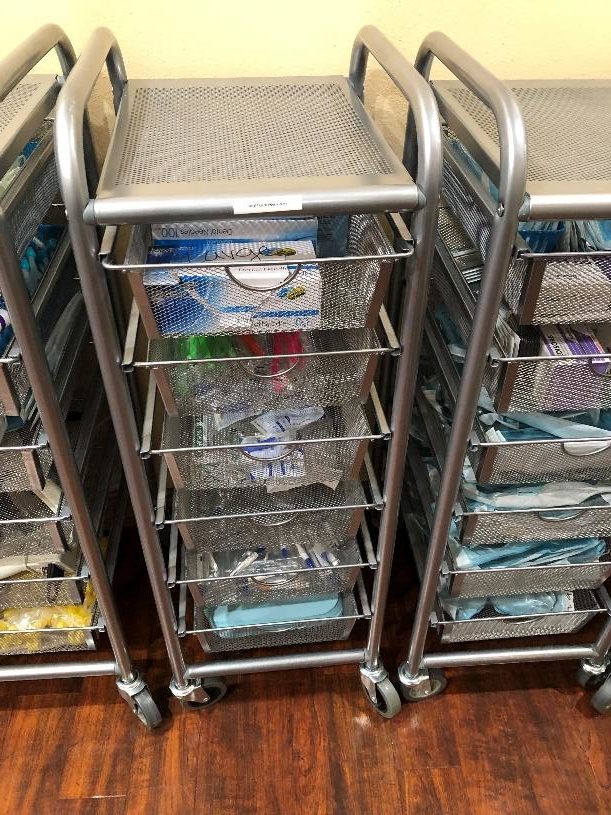
06 Mar Dental Instrument Transport and Storage
The transport of dental instruments before or after use has proven to be a long-standing problem for dental clinics, colleges of dental medicine, and other various dental specialty practices. Transporting clean instruments should be performed in a manner that protects instruments and devices from contamination from the environment, blood, and body fluids. Although transporting clean supplies and sterile instruments in an enclosed manner isn’t mandated by federal law or accreditation standards, perform a risk assessment to determine the best course of action for your practice.
Consider This
Before standardizing the dental instrument transport process for your practice, carefully assess the route those items will take and consider the following:
1. Will sterile instruments and clean supplies have to pass by anything that can splash onto them?
If instruments must pass the dirty instrument sink or ultrasonic, consider covering the sterile instruments before making the journey to the operatory
2. Does the route from instrument storage to the operatory pass by any open chairs or trays during procedures?
If so, consider covering clean supplies and sterile instruments with a sterile cloth or napkin during transport to the procedure area
Avoiding Contamination
This photo of a tray with various sterilized dental instruments is a perfect example of a good news/bad news situation.
The good news: Instruments and supplies transported to an operatory in this manner are protected from contamination.
The bad news: If you look closely, you will see the paper-plastic pouches have been caught between the lid and the tray, compromising the sterility of the instruments. If using anything with a lid to transport wrapped instruments, be sure the wrapping isn’t pinched, poked, or crushed. All of these actions can affect the sterility of the wrapped instruments.
CDC Guidelines for Infection Control in Dental Healthcare Settings
The Centers for Disease Control and Prevention (CDC) Guidelines for Infection Control in Dental Healthcare Settings (2003) recommends that dental practices develop policies and procedures for transporting contaminated (used) instruments and equipment. This will help with standardization, ensuring all dental healthcare personnel are transporting contaminated instruments safely and adhering to the Occupational Safety and Health Administration (OSHA) bloodborne pathogen standard. OSHA standards are federal law, although some states have a State OSHA which may have stricter requirements.
Unlike OSHA, the CDC develops guidelines, which are followed voluntarily. However, since the CDC develops national guidelines, accrediting organizations and the Centers for Medicare and Medicaid base their standards on CDC guidelines. Therefore, practices should comply with both OSHA standards and CDC guidelines to meeting requirements of all agencies and ensure patient safety.
OSHA Standards
The OSHA Bloodborne Pathogen Standard (29 CFR 19210.1030) states that immediately or as soon as possible after use, contaminated reusable sharps must be placed into appropriate containers until properly reprocessed. The Standard further defines an appropriate container as puncture-resistant, leakproof on all sides and bottom, and labeled or color-coded as a biohazard. Lastly, OSHA also states that employers must use engineering and work practice controls to eliminate or minimize employee exposure. This last statement is frequently reflected in accrediting agencies’ requirements for the transport container to be closable to prevent spillage during transport.
Some of the methods currently employed in dental clinics and practices to transport contaminated instruments to the processing area include carrying the cassette of contaminated instruments and carrying loose instruments on a bracket tray. Neither of these methods meet any of the OSHA Bloodborne Pathogen requirements for transporting contaminated instruments, nor do these methods sufficiently protect staff from potential sharps injuries or bloodborne pathogen exposure.
Instrument and Supply Storage
Best Practices
There are many options available for contaminated instrument transport that comply with CDC and OSHA Standards. If bracket trays with a lid are readily available in your office or clinic, consider using these to transport dirty instruments. If only used to transport dirty instruments, a biohazard sticker can be affixed to the lid. However, plan to replace the stickers at regular intervals since the stickers wear down due to exposure to chemicals used for decontamination.
Any container meeting the OSHA requirements can be used, as seen here. One option to avoid the need to replace biohazard stickers is to use a red container since red bags or containers are recognized as holding biohazardous material. There are commercially available red containers as well.
Incorrect Instrument Storage
Many practices employ nasty habits that can cause serious risk to themselves or patients. For example, these composite syringes were permanently parked on the counter in the operatory. This means they sat on the counter day after day and weren’t removed during procedures. The visible spattered material on the holder testifies to the potential for contamination during procedures.
Remember, the pouches or instrument wrap used to contain sterilized instruments are not impervious to fluids. It is not a good practice to keep sterilized instruments or clean equipment and supplies on counters during procedures due to the possibility of splash or spatter.
In this example, sterilized instruments are stored in the open behind the patient’s head. These instruments could potentially be contaminated by aerosols, spatter, and splash. Unfortunately, in this scenario, it is possible to unknowingly use contaminated instruments on a patient.
The CDC recommends storing sterile and single-use (disposable) instruments in an enclosed drawer or cabinet to ensure complete protection. Both carts seen below have open mesh drawers that allow contaminants to reach the instruments. Carts being kept in busy hallways only increases the potential for contamination, as well.
The CDC also reminds practices not to store dental supplies and instruments under sinks or in other locations where they might become wet. Basically, consider every area in the operatory to be contaminated – another reason to avoid storing supplies or instruments out in the open.
Conclusion
Stringently following CDC and OSHA safety protocol throughout your practice will ultimately minimize the risk of contaminating sterile dental instruments. It is essential to set up standardized safety measures for all members of a practice to follow and ingrain into their daily routines. Identify bad habits that are occurring in the workplace and develop easy-to-follow procedures to ensure the safety of your patients and partners. Implement proper protocol yourself or utilize an infection control expert to find the best practices for your team.

